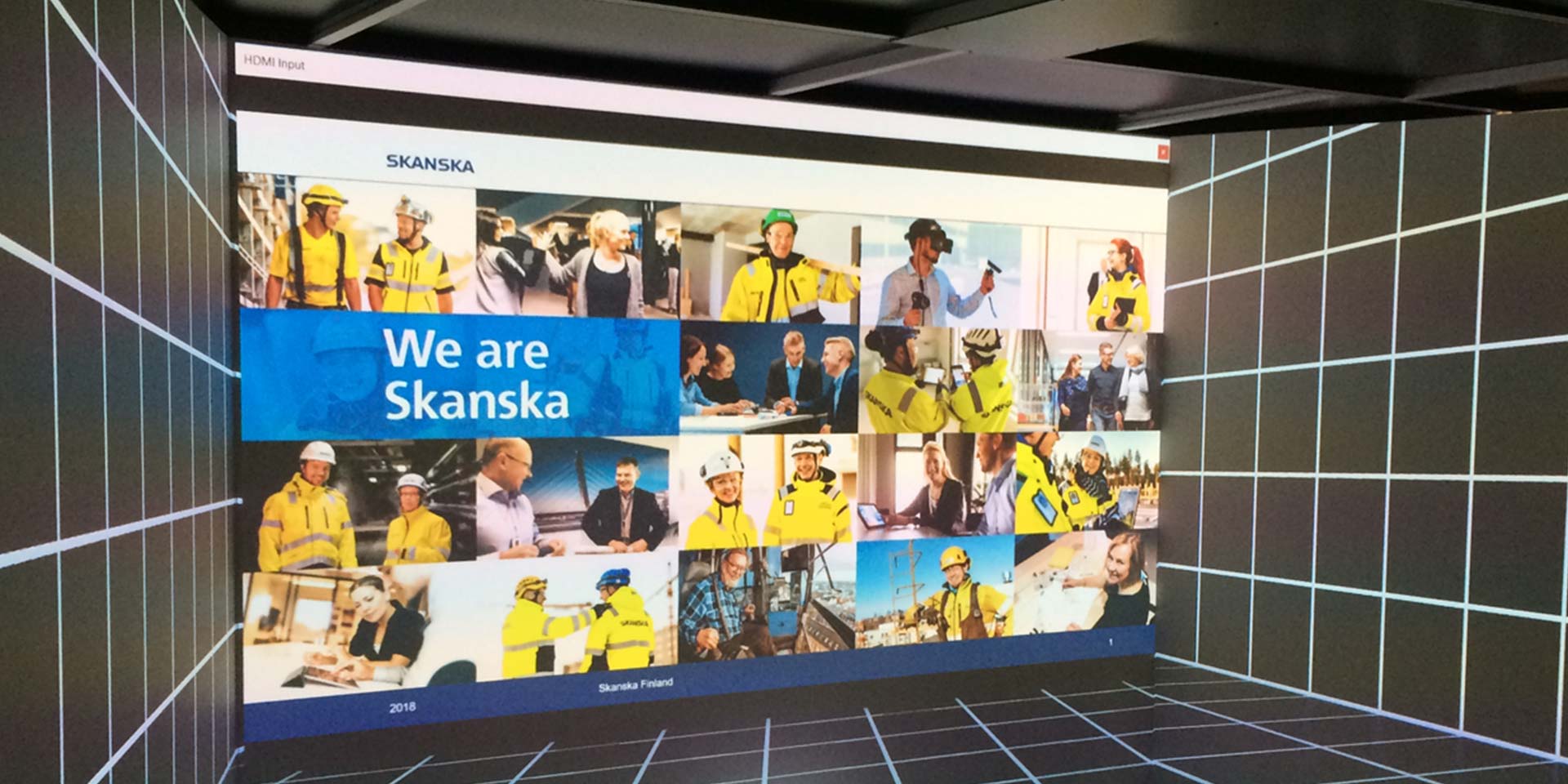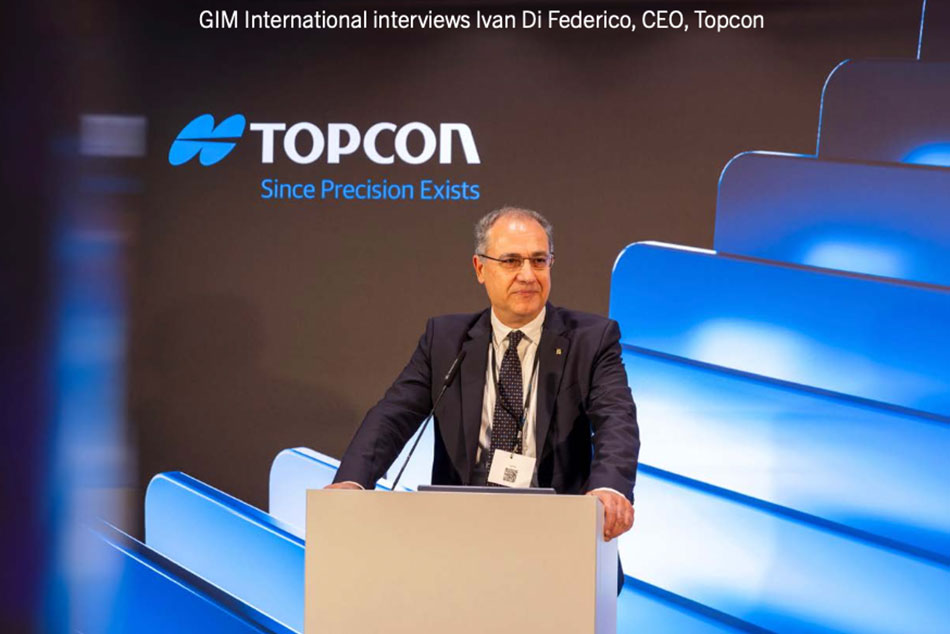The delegates gathered at the site of Skanska’s upcoming Ahvenisto Hospital project, due to be completed in 2024, to learn how European construction companies like Skanska plan, schedule and execute large infrastructure schemes – both vertical and horizontal. They also learnt how Topcon technology is used to optimise the entire workflow, increase efficiency and reduce costs.
Japan: an ageing society
The population of Japan is in decline and is ageing more dramatically than all other nations, with a quarter of citizens now aged 65 or older. In line with this, workforces are generally becoming older, but this is even more exaggerated in the construction industry.
One of the delegates, Mr Masayasu Nihei, deputy director of MLIT, explained: “The proportion of workers aged 55 or over has now increased to 35 per cent, while those aged 29 and under has slipped to just 10 per cent. Naturally, this reduction in young people entering the industry is leading to a shortage in manpower, and this is only expected to continue as time goes on.”
To tackle this issue, Japan has recently implemented a new system, called i-Construction, which promotes the adoption of new technologies to improve efficiency, with the aim of increasing productivity nationwide by 20 per cent by 2025. To achieve this, the Japanese government is turning to companies like Topcon and Skanska, which are leading the way when it comes to automation and data management, to learn about the latest advances and how they can harness these on home soil.
Bringing projects to life
As part of the visit the Ahvenisto Hospital site, delegates were introduced to CAVE (Computer Assisted Virtual Environment), a groundbreaking immersive virtual reality system that projects a stereoscopic 3D image onto the surfaces of an exhibition space, allowing multiple people to enter the environment at one time. It creates a 3D world with a field of vision exceeding 180 degrees and a 1:1 scale, allowing designers to present construction plans in 3D and true-to-life size, as if the project were already built.
CAVE plays an integral role in Skanska’s Integrated Project Delivery (IPD) approach, which sees the owner, architect and contractor become one entity, entering into a contractual agreement to collaborate during design and construction. CAVE enables these shareholders – as well as a variety of other parties – to get a clear impression of plans and provide well-informed feedback, which designers can use to decide on the final building configuration. This engagement helps the project team to resolve any potential design issues in advance, improving efficiency and saving costs.
How Integrated Project Delivery optimises workflows
The current Ahvenisto Hospital project, which is worth €370 million and measures 87,000m2, is a prime example of IPD at work. As well as the owner, architect and contractor collectively providing feedback on designs, potential future doctors, nurses and patients from the community have all been invited to share their expectations and consult on design recommendations. Even local kindergarten children were asked to share their views on what a great hospital would have through drawings.
Mikko Puttonen, business development manager at Skanska, explained: “Using IPD and the CAVE allows future hospital employees to advise on specific features and layouts, such as where emergency exits, hand sanitiser stations and wash basins should be located. It also helps plan storage and logistics, for example how beds can be safely rolled through the corridors, around corners and through doors, or where storage should be located to best support different hospital functions. This approach completely streamlines the approval process, facilitates maximum creativity in delivering the project and means we’re providing the best possible value for future generations.”
Another instance where IPD has been used to great effect is with Skanska’s VALTARI project, involving the creation of the Southern Ring Road in Lahti, Finland. With the help of Topcon’s MAGNET Office software, the team is expecting to complete the project in 2020 – one year earlier than originally planned. They’ve also been able to include an additional interchange in the scope of the project.
Serving future societies
Although Japan is facing a challenge in terms of construction manpower, its productivity objectives are entirely achievable if key decision makers capitalise on the latest technological innovations. Ongoing collaboration with international industry leaders will also be central to improving efficiency and keeping up with the demand for new and upgraded infrastructure.
Duncan McCormick, construction software sales specialist at Topcon Positioning Group, said: “We’re honoured to have welcomed our esteemed Japanese guests and thank them for joining us at Skanska’s impressive hospital site. It was a really productive day of sharing ideas and we look forward to maintaining these relationships so we can collectively deliver impactful infrastructure assets that will continue to benefit global societies for years to come.”
About Skanska:
Skanska’s operations in Finland cover construction services and residential and commercial project development. Construction services include building construction, building services, and civil and environmental construction. Skanska Oy employed 2,152 people at the end of the year 2018.
Skanska is one of the world’s leading construction and project development companies, focused on selected home markets in the Nordic region, Europe and USA. Supported by global trends in urbanization and demographics, and by being at the forefront in sustainability, Skanska offers competitive solutions for both simple and the most complex assignments, helping to build a sustainable future for customers and communities. The Group has about 38,000 employees. Skanska's sales in 2018 totaled EUR 16,6 billion.
For more information about Skanska, visit www.skanska.com

















